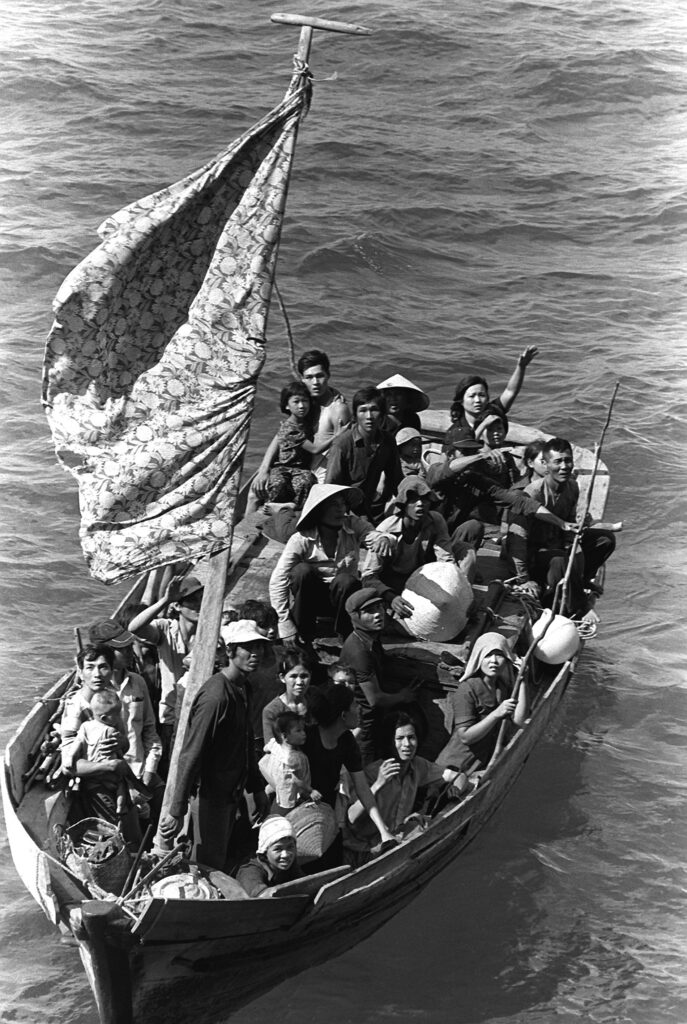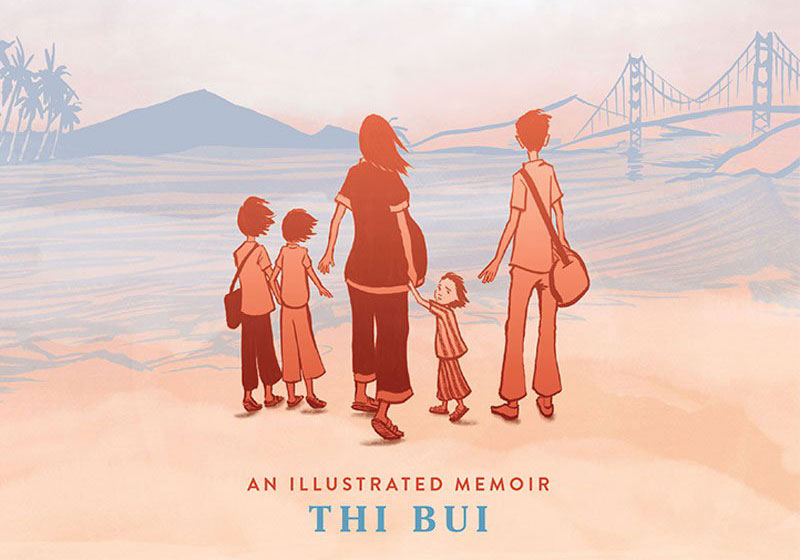The Best We Could Do Review: A Graphic Memoir for Grace, Grief, and Global Understanding

The Provision of Empathy: Understanding History Through Personal Narrative
Welcome back to The Founder’s Cultivated Library! Today, we delve into a powerful text that transcends traditional genres and offers profound insights for your Creative Calling™ Vocation. Thi Bui’s graphic memoir, “The Best We Could Do” is a wonderful story. This book is not just a compelling read. It is a vital tool for fostering empathy, understanding global history, and wrestling with our call to neighborly grace. More specifically, as it pertains to grief and child development.
This graphic memoir is an exceptional choice for a homeschool mom seeking high-leverage literature. It embodies the very essence of a “living book.” This memoir bringing the complex history of Vietnam, war, immigration, and family legacy to vibrant, accessible life.

A Story for Our Times: From Vietnam to America
Thi Bui’s “The Best We Could Do” is a deeply personal and beautifully illustrated graphic memoir. It traces her family’s arduous journey from war-torn Vietnam to their eventual resettlement in the United States. Born just months after her family immigrated, Bui embarks on a quest to understand her parents’ traumatic past and the sacrifices they made. The narrative weaves together her parents’ experiences during the Vietnam War, their perilous escape by boat, and the challenges of adapting to a new culture, all framed by Bui’s own journey into motherhood.
This memoir is more than a historical account; it’s an intimate exploration of intergenerational trauma, identity, and the relentless pursuit of a better life. Bui’s art is evocative, rich with symbolism, and deeply moving, allowing the reader to experience the emotional weight of her family’s story firsthand. This is precisely the kind of Depth Over Breadth study that enriches a classical education.
Integrating “The Best We Could Do” into Your Homeschool: A Multi-Disciplinary Master Scope
This graphic memoir offers an unparalleled opportunity for a profoundly integrated study, extending far beyond a simple history lesson. It aligns perfectly with our philosophy of seeking Core 20% resources that deliver expansive learning.
1. Global History & Geography: The Nexus of War and Migration
- Vietnam War History: This memoir provides a vital, human-centered entry point into the complexities of the Vietnam War. Students move beyond dates and battles to understand the personal stakes for civilians caught in the conflict. It contextualizes the impact of the war, not just on soldiers, but on families striving for survival.
- Post-WWII Asian History: The book implicitly connects to the broader sweep of Asian history, demonstrating how World War II’s aftermath (French colonialism) directly impacted the genesis of the Vietnam War. This helps students grasp the layered causes of global conflicts, avoiding simplistic narratives.
- Geography (U.S. & Vietnamese): The narrative naturally leads to geographical studies—the diverse landscapes of Vietnam, the perilous sea routes taken by refugees, and the specific regions in the U.S. where Vietnamese immigrant communities resettled. Mapping these journeys provides tangible connections to abstract historical events.
- Immigrant Experience & Racism: Bui bravely addresses the challenges of immigration, including culture shock, language barriers, and the racism her family encountered. This offers a powerful, first-person perspective on the immigrant process, fostering empathy and challenging ethnocentric viewpoints. This aligns with our commitment to Logic Stage Assurance, encouraging students to think critically about diverse human experiences.
2. Family & Generational History: The Legacy of Trauma and Resilience
- Intergenerational Impact: A central theme is the inherited trauma of war and displacement. Bui explores how her parents’ experiences shaped their parenting, and in turn, how that impacted her own identity and journey into motherhood. This provides a profound lens for discussing family history, resilience, and the sometimes invisible burdens passed down through generations.
- Nuclear Family Dynamics: The memoir illustrates the pressures and bonds within the nuclear family unit under extreme stress. It shows how love, sacrifice, and unspoken pain coexist. This is a rich text for discussing family dynamics in a historical context.
- Grief and Loss: The book is steeped in the grief of loss—loss of homeland, culture, family members, and innocence. It humanizes the grieving process within a refugee experience, demonstrating the long shadow of displacement. This is an invaluable resource for discussing healthy emotional processing and understanding the depths of human sorrow.
3. Child Development & Parental Vocation
- Parental Sacrifice: Bui’s parents made incredible sacrifices for their children’s future. This sparks crucial discussions about the Creative Calling™ Vocation of parenthood, the nature of love, and the choices parents make under extreme duress.
- Child’s Perspective: The memoir implicitly invites students to consider the war and immigration from a child’s perspective, both Bui’s own experience growing up in America and her parents’ experiences as children in wartime Vietnam. This offers a different layer to child development discussions within historical contexts.
A Lutheran Christian Perspective: Grace, Neighbor, and the Call to Action
As a business rooted in Lutheran Christian principles, we acknowledge our country and world’s profound need for the grace of a Savior. This book, while not explicitly religious, deeply illuminates our call to action for our neighbors.
- Forming the Neighbor-Love Vocation: From a Lutheran Christian perspective, our “neighbor” is anyone we encounter, especially those in need. This book powerfully portrays the plight of the refugee and immigrant—a biblical call to compassion (Matthew 25). It moves the concept of neighbor-love from abstract theology to concrete, human experience.
- Grace and Grief: The memoir shows immense human suffering and imperfection. It highlights the parents’ struggles, their limitations, and their enduring love. This provides a powerful backdrop for discussing the necessity of grace in the face of human brokenness. It affirms that grace is not just for our own sins, but for the profound grief and suffering caused by a fallen world. This aligns with Provision Over Pressure by demonstrating that true freedom and peace come from grace, not perfect circumstances.
- Justice and Compassion: While not a political text, the book inevitably stirs questions about justice, war, and societal responsibility towards the vulnerable. For a Christian family, these are essential discussions. They cultivate a heart of compassion and inform our prayerful engagement with global issues, reminding us that Christ calls us to actively seek the welfare of our community and the world.
High-Leverage Integration: Building Profound Understanding
Pairing “The Best We Could Do” with other first-person perspectives and primary resources from the Vietnam era will give a student a profound, deep understanding of the personal experience of war and immigration. Consider these additional resources:
- Oral Histories: Seek out oral histories from Vietnamese refugees and American veterans.
- Primary Source Documents: Explore government documents or news reports from the era.
- Fiction/Poetry: Integrate novels or poems that capture the human experience of this time.
- Guest Speakers: If possible, invite a veteran or immigrant from the era to share their experiences.
This memoir, therefore, isn’t just a book you read; it’s a launchpad for an entire, integrated unit study that builds Depth Over Breadth and fosters a true Logic Stage Assurance in your students. It helps them engage with the material critically, empathetically, and spiritually.
Cultivate Empathy and Global Understanding
“The Best We Could Do” is a crucial addition to your Legacy Library. It is an investment in your family’s empathetic understanding of the world and their call to grace.
Click Here to Purchase “The Best We Could Do” and Elevate Your Family’s Global Studies.
October 26, 2025
Leave a Reply Cancel reply
© 2025 Living Arts Press™. All rights reserved | fergus falls, minnesota
Living Arts Press™ • Calm • Classical • Confessional
Scripture quotations from the King James Version (KJV)
journal
about
privacy
info@livingartspress.press
to top
home
what we believe
The Great Pause
the master atlas
to top
© 2025 Living Arts Press. All rights reserved | fergus falls, minnesota
HOME
start here
BLOG
CONTACT
Curriculum
about
< what is the trivium?
< grammar stage
< logic stage
< rhetoric stage
RESOURCES
to top
© 2025 Living Arts Press. All rights reserved | fergus falls, minnesota
HOME
start here
BLOG
CONTACT
Curriculum
about
< guides
< printables
< highlights
< the library
RESOURCES
Be the first to comment